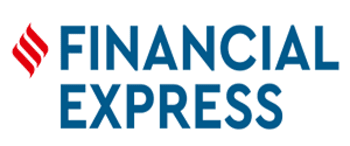"The thriving automotive sector in Indonesia is significantly dominated by the automotive turbocharger market, which is essential to pushing improvements in technology, fuel economy, and vehicle performance. The Indonesian automotive turbocharger industry has a distinctive blend of engineering quality, innovation, and environmental conscience with a focus on addressing changing market demands, strict emissions laws, and consumer preferences. As Indonesia's automobile industry expands, turbocharging technology has become a crucial tool for increasing power outputs, torque, and fuel efficiency. Turbochargers use the energy from exhaust gas to increase air intake into the engine, improving combustion efficiency and boosting engine output. In order to fulfil the rising demand for automobiles that provide higher power while consuming the least amount of fuel, this technology has made significant progress across both petrol and diesel engines. According to the report title, ""Indonesia Automotive Turbocharger Market, 2027"", publish by Bonafide research, the automotive turbocharger market is anticipated to grow at a higher growth rate as compared to historical period. The automotive turbocharger market in Indonesia demonstrates a significant focus on innovation and scientific developments. Both domestic and foreign businesses with operations in Indonesia provide the market with their knowledge and cutting-edge solutions. Collaborations between indigenous automakers and turbocharger producers make it possible to incorporate turbocharging technology into a variety of cars, meeting the various demands of the Indonesian automotive market. The Indonesian automobile turbocharger sector operates in a tightly controlled environment that ensures adherence to industry standards, safety rules, and environmental restrictions. Regulators, safety advocates, and industry cooperation are all fostered by organisations like the Ministry of Transportation. Turbocharger systems sold on the Indonesian market are of a high grade of quality, performance, and safety due to certifications like ISO standards compliance and attention to safety regulations.
What's Inside a Bonafide Research`s industry report?
Asia-Pacific dominates the market and is the largest and fastest-growing market in the animal growth promoters industry globally
Download SampleTurbochargers are used in all types of vehicles, including cars, trucks, ships, and buses, and they provide more power to the vehicle. Every single piston stroke in cylinders generates more power. The small size of the engine results in better fuel efficiency and economics. Turbochargers are often labelled as eco-friendly as they burn fuel with more oxygen and produce less air pollution. However, more power results in more energy output per second and may result in burning more fuel. Also, turbo engines are expensive, and the consumer needs to shell out comparatively more money. Adding a turbocharger to the engine forms a layer of complex mechanism that demands more maintenance and results in part failures occurring more often. Since the engine works harder, it wears out faster. Turbocharged engines require high quality fuels and gases and synthetic oils that are expensive. Passenger vehicles hold a major market share and are expected to follow the same trend in future years also, owing to an increased inclination by consumers for greater performance from fuel efficient vehicles. The increase in urbanisation and disposable incomes is further bolstering the market demand for passenger vehicles, which leads to more demand for turbochargers. Also, car manufacturers are continuously innovating in terms of engines that would give better performance and lower emissions, which create demand for the same. Stringent government regulations imposed on emissions are further expected to propel market growth over the forecast period. Electric vehicles are expected to bolster the demand for turbochargers, but at a lower speed as innovations are limited. The companies need to spend more on research and technology to incorporate turbochargers more effectively and efficiently into their vehicles. Innovating in design for turbochargers and downsizing, the companies are developing systems for diesel engines to increase fuel efficiency, lower emissions and increase power output. The stakeholders are grabbing the opportunities as diesel engines are widely used in commercial vehicles. To maximise revenue, automotive giants compete to introduce the best cars on the market, putting additional pressure on OEMs and aftermarkets of automotive turbochargers to innovate and strategically distribute the best components to upgrade automotives.
Variable geometry turbochargers are used more in automotives as downsized vehicles and emissions regulations come into place. It is used in most vehicles as it provides a boost, eliminating lag or builds up in engine speeds. The only impediment to the market is the high cost of additional parts and special materials to deal with the high temperatures in the engines. As VGT provides increased low-end torque with improved turbine efficiency to leverage technology in passenger vehicles with downsizing of engines, As it proves to be fuel efficient and has overall vehicular performance, it is expected to be in demand over the projected period. The automobile industry has been adversely affected by the pandemic, compelling stakeholders to adopt contingency planning to overcome uncertainties. They conducted various research and analysis before making new advancements to capture new markets and existing markets as well. The companies had to revaluate their existing supply chains. The assembly lines of turbochargers were forcibly shut down as the economy was pushed below with no vehicular movement. Also, there were no new requirements for installations and the spare turbochargers needed no replacements as vehicles remained unused. Considered in this report Geography: Indonesia Base year: 2021 Estimated year: 2022 Forecast year: 2027
Aspects covered in this report Indonesia Automotive Turbocharger market with its value and forecast along with its segments Various drivers and challenges On-going trends and developments Top profiled companies Strategic recommendation Types of Technology in the report: Variable Geometry Turbocharger Wastegate Turbocharger Electric Turbocharger By Vehicle Type in the report: Passenger Vehicle Commercial Vehicle Type of Fuel in the report: Gasoline Diesel Type of Sales Channel in the report: Original Equipment Manufacturer Aftermarket The approach of the report: This report consists of a combined approach of primary as well as secondary research. Initially, secondary research was used to get an understanding of the market and listing out the companies that are present in the market. The secondary research consists of third party sources such as press releases, annual report of companies, analysing the government generated reports and databases. After gathering the data from secondary sources primary research was conducted by making telephonic interviews with the leading players about how the market is functioning and then conducted trade calls with dealers and distributors of the market. Post this we have started doing primary calls to consumers by equally segmenting consumers in regional aspects, tier aspects, age group, and gender. Once we have primary data with us we have started verifying the details obtained from secondary sources. Intended audience This report can be useful to industry consultants, manufacturers, suppliers, associations & organizations related to automotive turbocharger industry, government bodies and other stakeholders to align their market-centric strategies. In addition to marketing & presentations, it will also increase competitive knowledge about the industry. Please get in touch with our sales team to find out more. "
Table of Contents
- Table of Content
- 1. List of Figures
- 2. List of Table
- 3. Executive Summary
- 4. Introduction
- 4.1. Market Definition
- 4.2. Market Scope & Segmentation
- 4.3. Research Methodology
- 5. Indonesia Macro Economic Indicators
- 6. Indonesia Automotive Turbocharger Market Category Analysis
- 6.1. Key findings
- 6.2. Market Drivers
- 6.3. Market Restraints
- 6.4. Opportunities
- 6.5. Policies & Certification
- 6.6. Value Chain Analysis
- 6.7. Key Developments - 2021
- 7. Indonesia Automotive Turbocharger Market Trends
- 8. Indonesia Automotive Turbocharger Market Overview
- 8.1. Market Size By Value
- 8.2. Market Share
- 8.2.1. By Technology Type
- 8.2.2. By Vehicle Type
- 8.2.3. By Fuel Type
- 8.2.4. By Sales Channel
- 9. Indonesia Automotive Turbocharger Market Segmentations
- 9.1. Indonesia Automotive Turbocharger Market, By Technology Type
- 9.1.1. Indonesia Automotive Turbocharger Market Size, By Variable Geometry Turbocharger, 2016 - 2027F
- 9.1.2. Indonesia Automotive Turbocharger Market Size, By Wastegate Turbocharger, 2016 - 2027F
- 9.1.3. Indonesia Automotive Turbocharger Market Size, By Electric Turbocharger, 2016 - 2027F
- 9.2. Indonesia Automotive Turbocharger Market, By Vehicle Type
- 9.2.1. Indonesia Automotive Turbocharger Market Size, By Passenger Vehicles, 2016 - 2027F
- 9.2.2. Indonesia Automotive Turbocharger Market Size, By Commercial Vehicles, 2016 - 2027F
- 9.3. Indonesia Automotive Turbocharger Market, By Fuel Type
- 9.3.1. Indonesia Automotive Turbocharger Market Size, By Gasoline, 2016 - 2027F
- 9.3.2. Indonesia Automotive Turbocharger Market Size, By Diesel, 2016 - 2027F
- 9.4. Indonesia Automotive Turbocharger Market, By Sales channel
- 9.4.1. Indonesia Automotive Turbocharger Market Size, By Original Equipment Manufacturer, 2016 - 2027F
- 9.4.2. Indonesia Automotive Turbocharger Market Size, By Aftermarket, 2016 - 2027F
- 10. Indonesia Automotive Turbocharger Market Opportunity Assessment
- 10.1. By Technology Type, 2022F to 2027F
- 10.2. By Vehicle Type, 2022F to 2027F
- 10.3. By Fuel Type, 2022F to 2027F
- 10.4. By Sales Channel, 2022F to 2027F
- 11. Competitive Landscape
- 11.1. Porter's Five Forces
- 11.2. Company Profiles
- 11.2.1. Company 1
- 11.2.2. Company 2
- 11.2.3. Company 3
- 11.2.4. Company 4
- 11.2.5. Company 5
- 11.2.6. Company 6
- 11.2.7. Company 7
- 11.2.8. Company 8
- 12. Strategic Recommendations
- 13. Disclaimer
Table 1: Indonesia Automotive Turbocharger Market Size of Variable Geometry Turbocharger (2016 to 2027F) in USD Million
Table 2: Indonesia Automotive Turbocharger Market Size of Wastegate Turbocharger (2016 to 2027F) in USD Million
Table 3: Indonesia Automotive Turbocharger Market Size of Electric Turbocharger (2016 to 2027F) in USD Million
Table 4: Indonesia Automotive Turbocharger Market Size of Passenger Vehicles (2016 to 2027F) in USD Million
Table 5: Indonesia Automotive Turbocharger Market Size of Commercial Vehicles (2016 to 2027F) in USD Million
Table 6: Indonesia Automotive Turbocharger Market Size of Gasoline (2016 to 2027F) in USD Million
Table 7: Indonesia Automotive Turbocharger Market Size of Diesel (2016 to 2027F) in USD Million
Table 8: Indonesia Automotive Turbocharger Market Size of Original Equipment Manufacturer (2016 to 2027F) in USD Million
Table 9: Indonesia Automotive Turbocharger Market Size of Aftermarket (2016 to 2027F) in USD Million
Table 10: Key Facts of Company 1
Table 11: Key Facts of Company 2
Table 12: Key Facts of Company 3
Table 13: Key Facts of Company 4
Table 14: Key Facts of Company 5
Table 15: Key Facts of Company 6
Table 16: Key Facts of Company 7
Table 17: Key Facts of Company 8
Figure 1: Indonesia Automotive Turbocharger Market Size – By Value 2016 to 2027F (In USD Million)
Figure 2: Indonesia Automotive Turbocharger Market Share By Technology Type (2016, 2021 & 2027F)
Figure 3: Indonesia Automotive Turbocharger Market Share By Vehicle Type (2016, 2021 & 2027F)
Figure 4: Indonesia Automotive Turbocharger Market Share By Fuel Type (2016, 2021 & 2027F)
Figure 5: Indonesia Automotive Turbocharger Market Share By Sales Channel (2016, 2021 & 2027F)
Figure 6: Market Attractiveness Index, By Technology Type
Figure 7: Market Attractiveness Index, By Vehicle Type
Figure 8: Market Attractiveness Index, By Fuel Type
Figure 9: Market Attractiveness Index, By Sales Channel
Figure 10: Porter's Five Forces Meter of Automotive Turbocharger Industry in Indonesia
Related Reports
 We are friendly and approachable, give us a call.
We are friendly and approachable, give us a call.















